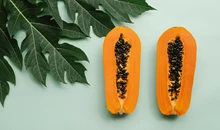
Microplastics pose a major threat to human health, possibly entering our bodies through drinking water and escalating the risk of illnesses. Furthermore, they represent a widespread environmental danger, being detected even in remote regions like polar ice caps and deep ocean trenches, thus endangering both aquatic and terrestrial life forms.
Scientists have previously experimented with filtering membranes to eliminate microplastics. However, these membranes can become clogged with these minute particles, making them impractical and unsustainable in the long run.
To tackle this growing environmental concern, Researchers at the Indian Institute of Science (IISc) have designed a sustainable hydrogel to remove microplastics from water. The IISc team found that the hydrogel could remove over 90% of microplastics during experiments. It can bind the contaminants and degrade them using UV light irradiation. Moreover, the sustainable hydrogel designed by the researchers has a unique intertwined polymer network that can bind the contaminants and degrade them using UV light irradiation.
The IISc team led by Suryasarathi Bose, Professor at the Department of Materials Engineering, decided to turn to 3D hydrogels. The novel hydrogel developed by the team comprises three different polymer layers – chitosan, polyvinyl alcohol, and polyaniline – intricately intertwined to form an interpenetrating polymer network (IPN) architecture, as stated by IISc. Infusing this matrix with nanoclusters of a material known as copper substitute polyoxometalate (Cu-POM), the team created catalysts capable of utilizing UV light to degrade microplastics. This combination of polymers and nanoclusters resulted in a robust hydrogel with the capability to both adsorb and degrade large quantities of microplastics.
Addressing the challenge of detecting these very small particles, the researchers added a fluorescent dye to the microplastics to monitor their adsorption and degradation by the hydrogel under varying conditions. They checked the removal of microplastics at different pH levels of water, different temperatures, and different concentrations of microplastics.
The hydrogel exhibited high efficiency, removing approximately 95% and 93% of two different types of microplastics in water with near-neutral pH (∼6.5). Additionally, the team of experts conducted several experiments to assess the durability and strength of the material, finding that the combination of the three polymers rendered it stable under various temperatures.










